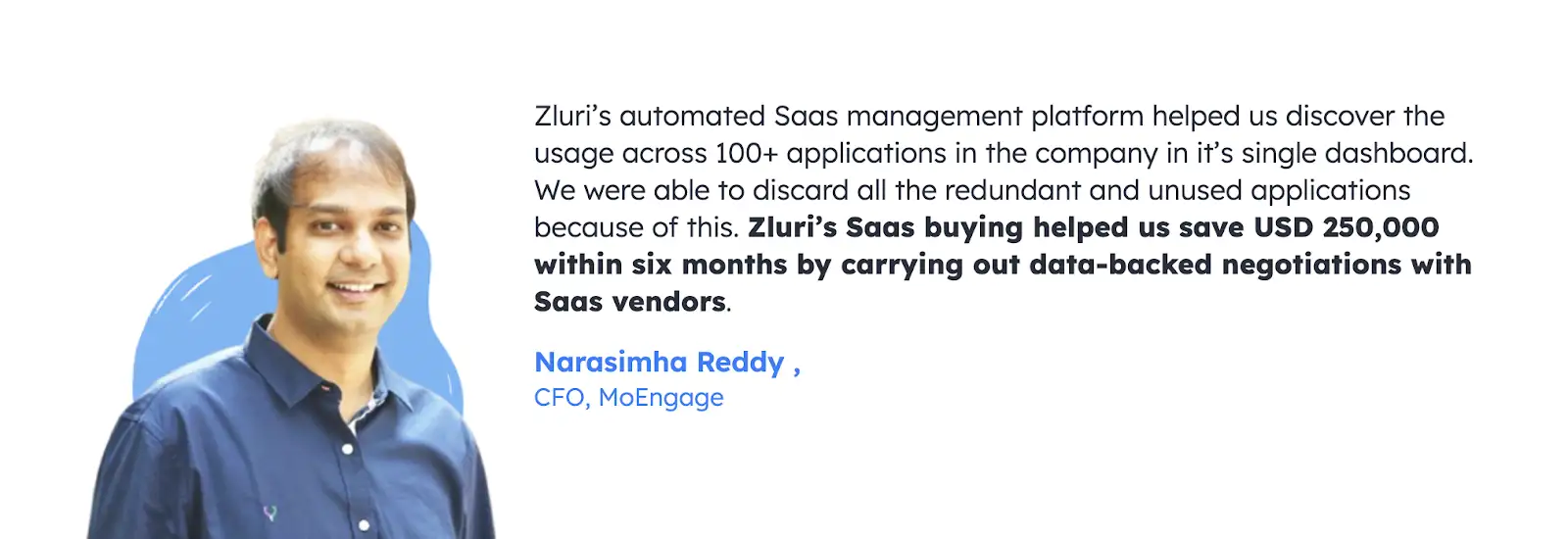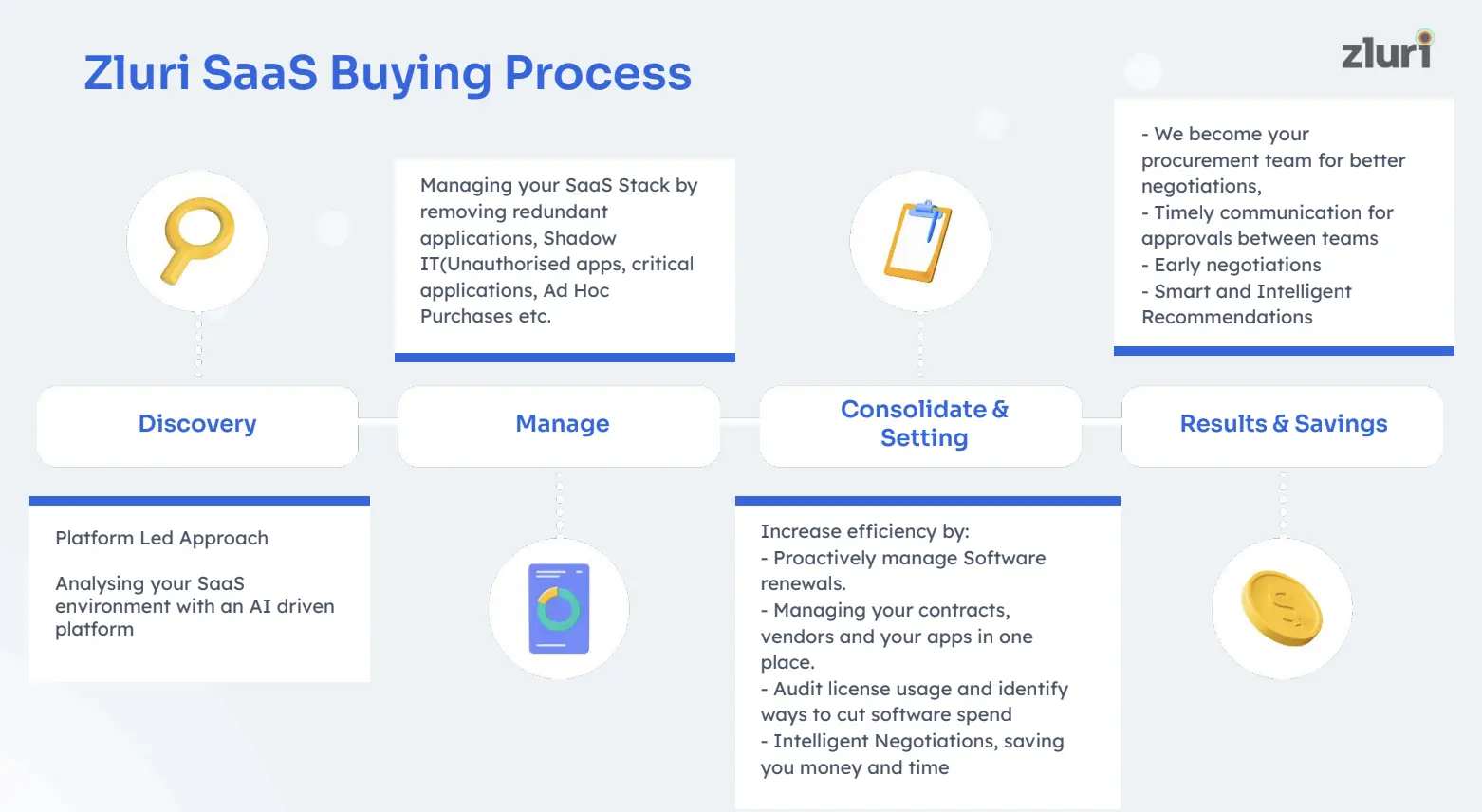Inefficient IT procurement and sourcing processes can lead to expensive consequences such as unreliable and inadequate IT solutions. To avoid this, IT leaders must adopt effective procurement and sourcing strategies to ensure they get the best possible deals.
Let's explore some ways to revolutionize IT procurement and sourcing strategies to enhance business success.
Effective IT procurement and sourcing have evolved from just a support function to a key driver for success in the technology-driven world. With the rapid evolution of technology, IT leaders must ensure that they procure and source the right IT solutions and services that align with their overall business strategy, goals, and budget.
Without a well-executed IT procurement and sourcing process, IT leaders may end up overspending or purchasing unreliable IT solutions that fail to meet their requirements.
Conversely, a well-executed IT procurement and sourcing process can help companies save money, meet necessary security standards, and ensure that their purchases align with specific departments' IT requirements.
If you want to optimize your IT procurement and sourcing strategies and stay ahead of the competition, it's crucial to implement practical approaches. Doing so can revolutionize your approach and boost your business's success.
Top Ways to Optimize IT Procurement & Sourcing Strategies
Here are some top ways to improve IT procurement and sourcing:
1. Developing procurement strategies based on user requirements
A well-planned procurement strategy is an essential aspect of IT procurement. It involves the development of a plan or a framework that outlines how each department can acquire the necessary SaaS solutions in a manner that is both efficient and cost-effective.
By implementing a well-planned procurement strategy, IT teams can ensure that employees can access the tools and resources needed to perform their jobs effectively. This can help boost productivity and result in better outcomes.
For instance, with the right SaaS apps in place, employees can work more efficiently, collaborate more effectively, and improve the overall performance of their department.
Moreover, a strategic procurement approach can benefit IT procurement teams. By adopting this approach, teams can identify cost savings opportunities, negotiate better contracts, and select suppliers that provide the most value for the organization. This approach also allows procurement teams to become more strategic in their work, ultimately leading to better outcomes.
2. Researching potential vendors and evaluating vendor proposals
Finding the best vendor becomes crucial when it comes to fulfilling your users' needs. This involves a comprehensive process of researching potential vendors, analyzing vendor proposals, and conducting due diligence on vendors.
Researching potential vendors involves identifying and evaluating a wide range of vendors who can offer the right apps for each department's requirements. When selecting potential vendors, it is important to consider factors such as vendor reputation, product quality, pricing, and customer support.
Once you have identified potential vendors, the next step is to analyze their proposals. This involves thoroughly reviewing their offerings, including their app specifications, pricing, and terms and conditions. Again, it is crucial to carefully examine the vendor proposals to ensure they align with your IT needs and budget.
Conducting due diligence on vendors is a critical step in the vendor selection process. This involves investigating the vendor's history, financial stability, and reputation to ensure they are a reliable and trustworthy partner. Due diligence may also include reviewing the vendor's legal and regulatory compliance and their security and data protection policies.
Following these steps helps ensure that you select the right vendor for your user's SaaS requirements. This helps maximize the value of your technology investments and minimizes the risks associated with selecting the wrong vendor.
3. Negotiating contracts with the help of data
Establishing clear and concise contract terms is the first step in negotiating a contract. This includes identifying the scope of work, timelines, deliverables, and performance metrics. It is vital to ensure that all parties involved in the negotiation process clearly understand and agree with these terms.
Once the terms are established, the next step is to negotiate pricing and other details. This can include payment terms, warranties, service level agreements(SLAs), and termination clauses. IT procurement teams should carefully consider their bargaining power and aim for favorable terms that meet their needs while also being fair to the vendor.
Ensuring that the negotiated contract complies with applicable laws and regulations is crucial. This can include data protection regulations, export control laws, and anti-bribery laws. IT procurement teams should work closely with legal teams to ensure that the contract is legally sound and protects the company's interests.
In addition to negotiating the contract, it is also important to monitor compliance throughout the duration of the agreement. This can include regular audits, performance reviews, and adherence to payment schedules. Establishing clear communication channels with the vendor to address any issues arising during the contract period is important.
4. Implementing, monitoring & optimizing the SaaS applications
Ensuring that the implementation, monitoring, and optimization of SaaS apps are done effectively is essential for IT procurement teams. This involves setting clear implementation objectives, developing a well-thought-out plan, and providing comprehensive testing and training to avoid operational disruptions.
Once the SaaS app is deployed, conducting periodic reviews and evaluating vendor performance can help identify areas for improvement and ensure that the SaaS app meets the necessary requirements. In addition, this process allows for necessary adjustments to be made to optimize the app's performance and ensure maximum ROI.
Poorly executed SaaS app implementations can lead to operational disruptions, employee frustration, and financial losses. In addition, the lack of proper monitoring and optimization can lead to underutilization of the app and reduced ROI.
By focusing on the effective implementation, monitoring, and optimization of SaaS apps, IT procurement teams can ensure that departments get the most out of their technology investments. This helps to increase productivity, improve collaboration, and enhance overall business performance, which is critical in today's highly competitive digital environment.
Streamlining IT Procurement and Sourcing with Zluri
Zluri is an innovative platform that provides SaaS procurement services that streamline the process of buying and renewing software applications. It is designed to help IT procurement teams save time and money by negotiating the best deals and agreements with vendors, thereby reducing software expenses.
One of the most significant advantages of using Zluri is that it offers a complete end-to-end solution for SaaS procurement, from identifying the right vendors and negotiating deals to managing the SaaS stack.
Not just that, Zluri has helped numerous companies save money and streamline their SaaS procurement process. For example, a top cybersecurity company saved $500,000 and 400 hours on SaaS procurement, while MoEngage saved over $250,000 in just five months.

These companies achieved such significant savings because of Zluri's standard SaaS procurement process, which involves procurement, finance, and individual requesters to ensure maximum transparency throughout the SaaS buying process.
Zluri's four-step SaaS buying process includes discovery, management, consolidation and settings, and savings. During the discovery phase, Zluri's experts work with the IT team to understand their SaaS stack using the platform's five discovery methods, including SSO, finance, and expense management systems.

The management phase involves removing redundant and duplicate applications, optimizing SaaS spending, and eliminating Shadow IT. During consolidation and settings, Zluri helps customers plan their SaaS buying for the next 12 months, negotiate the best deals, and manage contract documentation.
Finally, the savings phase involves automatic churn of unutilized licenses and duplicate apps and savings of up to 50% on subscriptions during the renewal window period.

In addition, Zluri has access to a lot of information related to applications that help during the negotiation and empower them to get the best price and deal for your application requirements. ZOPA (Zones of Possible Agreements) and BATNA (Best Alternative To a Negotiated Agreement) are two such important pieces of information that help in any negotiation. Let's understand them in detail.
Suppose you are looking to purchase a SaaS app from a vendor with a budget of $50,000. After researching the market, you find a vendor who offers the app you need for a price range of $45,000 to $55,000. The ZOPA in this scenario is the overlap between your budget and the vendor's pricing range, which is $45,000 to $50,000.
With this knowledge, Zluri can negotiate confidently for you and aim to get the SaaS app for a price closer to $45,000 while ensuring the vendor still earns a profit.Let's say you're negotiating a new service contract with a vendor. Your preferred vendor is offering a price of $20,000 annually. However, you have obtained quotes from other vendors offering similar services for $18,000 and $16,000 annually. BATNA, in this scenario, is to go with one of the other vendors if the preferred vendor can't meet your price range.
Armed with this information, Zluri can negotiate with the preferred vendor and aim to get the service for a price closer to $16,000 or $18,000 per year. If the preferred vendor can't match this price, you can choose to go with your BATNA and choose a different vendor.
Zluri also offers modularized pricing for different categories of software products, ensuring that customers only pay for what they need.
Moreover, Zluri's experts analyze the overlapping of features between multiple SaaS apps, providing customers with valuable insights and guidance on which apps to remove to simplify their SaaS environment and reduce unnecessary spending.
Zluri is a game-changer for IT leaders looking to streamline their SaaS procurement process, save money, and optimize their SaaS stack. With its insights, end-to-end solution, and commitment to transparency and trust, Zluri is the ideal partner for businesses looking to achieve significant savings in their SaaS spending.
Try it out yourself! Book a demo now.
